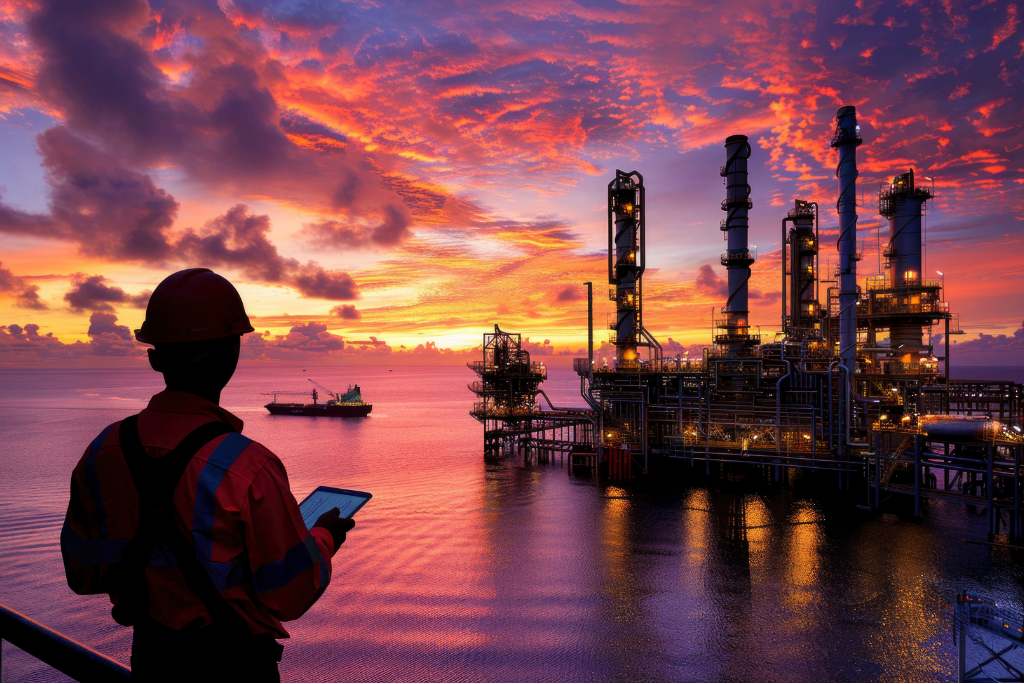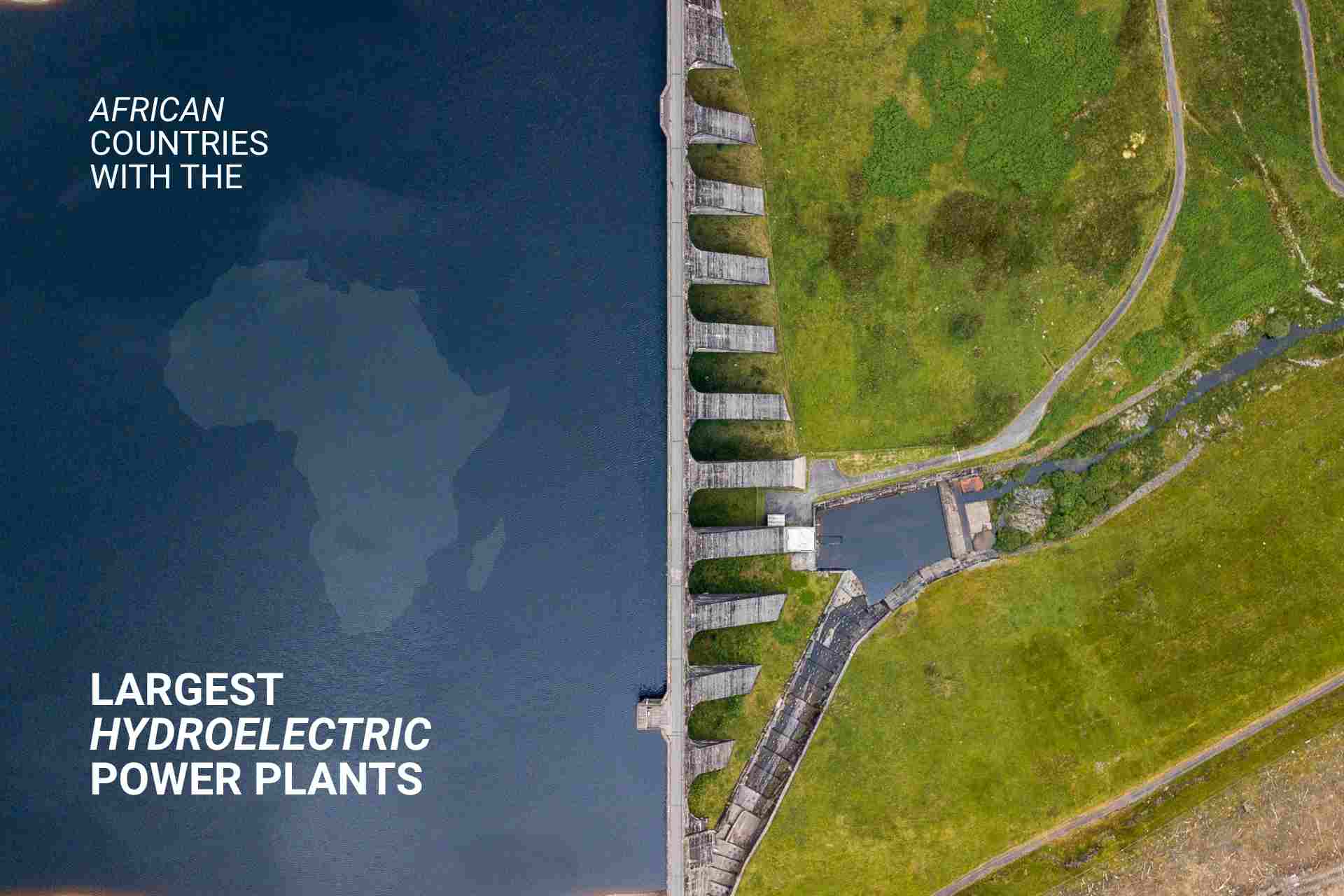
Africa’s energy sector is evolving fast. As the world grapples with cleaner energy transitions, this continent is quietly but steadily stepping into the spotlight. In 2024, Africa consumed about 183 billion cubic meters (bcm) of natural gas, a 3% jump from the year before. And if projections from the Gas Exporting Countries Forum (GECF) are anything to go by, 2025 is shaping up to see another 4% rise.
What’s behind this upward trend? Think booming industries, more power plants, and some serious investment in LNG (liquefied natural gas) infrastructure. But here’s the big question: Which countries are actually driving this gas boom?
Let’s take a closer look at the top gas consumers in Africa for 2025 and what their strategies reveal about the future of energy on the continent. These shifts also point to some key investment opportunities in Africa.

Algeria’s still wearing the crown. It’s not just Africa’s top gas producer but also its biggest consumer. Domestic demand from power stations and a sturdy industrial base keeps its numbers high. Plus, its long-standing exports to Europe and new upstream investments show Algeria isn’t slowing down anytime soon.
Neck and neck with Algeria is Egypt. But its path has been a bit rockier. The once-heroic Zohr gas field has seen declining output, dropping from 70 bcm in 2021 to under 54 bcm by 2024 (according to Financial Times and Reuters). To fill the gap, Egypt turned to LNG imports, bringing in over 40 shipments just in 2024. Meanwhile, it’s actively drilling and rethinking its export-import game plan.
Nigeria’s got a gas goldmine, over 200 trillion cubic feet in proven reserves. Under its “Decade of Gas” policy, the country’s upped its domestic consumption to about 21 bcm. Power generation, industrial expansion, and massive infrastructure projects like the Ajaokuta-Kaduna-Kano pipeline are pushing things forward. Gas flaring? Still happening, but it’s slowly coming down. Nigeria remains one of the strongest business opportunities in Africa when it comes to energy.
Despite its shaky political climate, Libya’s gas story has been surprisingly steady. Most of its 9 bcm consumption feeds oil production and power plants. And with new offshore fields expected post-2025, we might see that number climb.
Tunisia might not be a gas giant, but it plays a smart game. Consuming around 5 bcm annually, it focuses on the electricity and light industry. Its regional pipeline links with Algeria and Libya give it a strategic edge despite its modest size.
South Africa is turning the page on coal. Big time. It’s heavily investing in LNG terminals like those in Coega and Richards Bay. With gas use currently around 4.5 bcm, the country’s energy security goals and industrial demand are setting it up for a much bigger gas future, and opening up new investment opportunities in Africa for investors watching energy markets.
Ghana’s not just riding the wave, it’s creating it. With around 3.9 bcm in gas consumption, it’s building new pipelines and floating LNG terminals. Projects like the Sankofa field and gas-to-power initiatives are putting Ghana firmly on the investor map.
Ivory Coast’s gas use is rising steadily about 2.6 bcm, mostly to power up thermal stations. Recent expansions in the Foxtrot and Marlin fields are helping cut down imports and strengthen regional trade.
Tanzania taps into domestic fields like Ntorya and Mnazi Bay to support its 1.8 bcm demand. The government approved a 25-year license for Ntorya in late 2024, signaling more to come. That said, large-scale LNG export plans are still sitting in the waiting room.
Angola consumes about 1.4 bcm of gas, mainly from what’s produced alongside its oil. The Soyo LNG plant and reinjection programs help balance local supply. With industrial usage set to increase, Angola might just scale up sooner than expected.

No surprise here, most of Africa’s gas is being used to power homes and factories. From Nigeria to Ghana to South Africa, gas-to-power projects are reshaping the continent’s energy landscape.
Countries like South Africa, Ghana, Senegal, and Mauritania are pouring resources into regasification terminals. The goal? Better energy access, reduced diesel imports, and more stability in the face of patchy renewable output.
Over 600 million Africans still lack reliable electricity (IEA stats, sobering but true). Natural gas offers a bridge that is reliable, cleaner than coal, and scalable, while the renewable sector catches up. For now, renewables still make up less than 20% of Africa’s energy mix (IEA, IRENA 2024).

Between 2030 and 2040, Africa’s gas infrastructure (think pipelines, terminals, storage) is expected to draw in over $115 billion. Regasification projects alone could take a $16 billion slice of that pie.
Algeria, Nigeria, Egypt, and Mozambique are actively expanding gas exploration and production, part of a whopping $934 billion in projected gas investments by 2050.
From converting coal plants to building new gas power stations, public-private partnerships are booming across West and Southern Africa.
Floating LNG units in Senegal and Mauritania and onshore expansions in Nigeria and Mozambique are opening up big-time opportunities for both domestic supply and exports.
A fast-growing trend: pairing gas with renewables to build more stable hybrid grids. These setups—solar + gas, wind + gas are attracting clean energy startups and tech innovators alike.

By 2025, Algeria, Egypt, and Nigeria are still Africa’s natural gas heavyweights. But South Africa, Ghana, and even Libya aren’t far behind. It’s not just about keeping the lights on, it’s about building a future that’s smart, adaptable, and investor-ready.
The natural gas story in Africa isn’t a one-size-fits-all narrative. It’s a patchwork of opportunities, challenges, and potential waiting to be unlocked. And for investors who are ready to take a measured, strategic leap, now’s a pretty good time to get involved. And if you’re serious about business opportunities in Africa, natural gas might just be your strongest bet in the short-to-mid term.
Sources:
1. What are the top 10 natural gas-consuming countries in Africa for 2025?
In 2025, the natural gas scene in Africa is dominated by a familiar set of players. Algeria and Egypt are neck-and-neck at the top, each consuming around 60 billion cubic meters (bcm) annually. Nigeria follows with about 21 bcm, thanks to its huge reserves and power sector demand. Then come Libya, Tunisia, South Africa, Ghana, Ivory Coast, Tanzania, and Angola, all contributing in their own unique ways, from powering industries to fueling domestic energy needs. Each of these countries plays a different role, but together, they’re shaping the continent’s gas future.
2. Why is natural gas consumption increasing in Africa?
Simple answer? Demand is booming. But there’s more to it. Africa is industrializing fast, and that means more factories, more electricity needs, and let’s be honest more pressure to keep the lights on. At the same time, countries are moving away from dirtier fuels like coal and diesel. With LNG terminals popping up across the map and more infrastructure in place, gas has become a go-to solution. It’s reliable, cleaner than many alternatives, and increasingly accessible.
3. How does Africa’s natural gas consumption compare globally?
Globally speaking, Africa still isn’t among the top-tier gas consumers, yet. Regions like Asia, North America, and parts of Europe consume significantly more. But what’s important here is growth. While the big players are plateauing or shifting toward renewables, Africa’s gas use is on an upward swing. So, while the volume may not rival the global giants, the momentum absolutely does. And that’s what has energy watchers paying close attention.
4. What role does natural gas play in Africa’s energy transition?
Think of natural gas as Africa’s bridge fuel, the one filling the gap between fossil-heavy pasts and a renewable-powered future. With over 600 million people still lacking stable electricity, gas is a practical, scalable option that can power homes and factories today, while solar and wind slowly catch up. It’s not the final destination, but it’s a vital stop along the way. Gas offers base-load stability, supports hybrid energy setups, and gives governments breathing room to build greener grids at their own pace.
5. Which sectors are the primary consumers of natural gas in Africa?
It’s mostly about power and industry. These two sectors soak up around two-thirds of all the gas used across the continent. Gas-to-power projects are everywhere from Nigeria’s thermal plants to Ghana’s grid expansions. Industrial users, cement factories, chemical plants, you name it, also rely heavily on gas for heat and processing. And as these sectors grow, so does their appetite for consistent, cost-effective energy.

When Jensen Huang, CEO of NVIDIA, teamed up with Cassava Technologies to build what they and others describe as Africa’s “first AI factory,” it wasn’t just another tech announcement. It signals serious moves, for investment, for local capacity, for digital sovereignty. But what this really means, how it may benefit the investment opportunities in Africa, […]

Africa’s hydropower story isn’t just about big dams. It’s about politics, climate risk, export potential and where real investment opportunities in Africa lie. Below are some of Africa’s biggest hydropower assets, what they are, what they could be, and what that means for investors. Major Players Today Country Plant / Complex Installed / Nameplate Capacity* […]

Starlink moving from licence to live service in Chad is straightforward news, but the implications are anything but. Let’s break it down, what happened, how Chad compares to other African markets, what Starlink actually brings to the table, the security and regulatory trade-offs, and what investors and businesses should watch next. Licence vs activation Chad […]